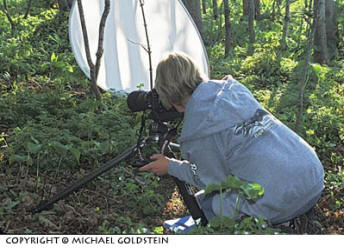
Macro Photographer
This candid image shows a typical setup for macro photography. The camera is mounted on a sturdy tripod. A large diffuser is set up to one side, softening the bright sun that falls on the subject (just out of shot to the left). The photographer has the control of a remote shutter release in her left hand, and is most likely waiting for the breeze to subside, before shooting.
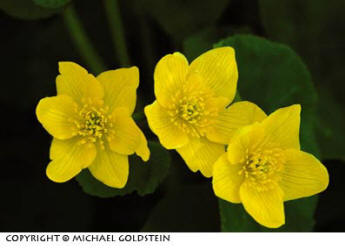
Marsh Marigolds
(This image and the two following)
These marsh marigolds were photographed around Alger Falls, just outside Munising, Michigan. On a cloudy day, bright colours such as these just seem to jump off the film. To separate the flowers from the background, I reflected skylight on them, using a folding reflector. The dark background is nicely diffused.
An effort was made to place the front element of the lens as parallel to the front of the flowers as possible, to ensure they would be in focus. These blossoms are quite large, and don’t require macro equipment to photograph them.
This composition represents an exposure problem, as the flowers are brighter than mid-tone, and the background is darker than mid-tone. While autoexposure might have done a credible job, I chose to spot-meter on the blossoms using manual exposure, then opened up a half fstop, and bracketed exposure around that point.
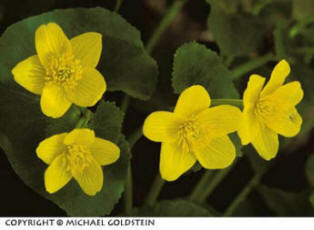
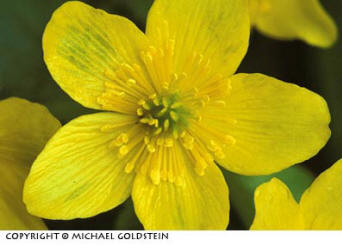
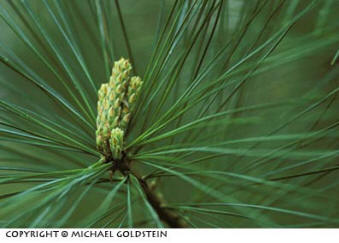
Pine Bud
This is another example of finding subject matter, other than flowers, for macro photography. This pine bud was placed to occupy the left third of the frame, and to curve into the image frame. A 180mm macro lens nicely captured the bud itself, while allowing the surrounding needles to go soft. The entire composition is mid-tone, so exposure was not an issue.
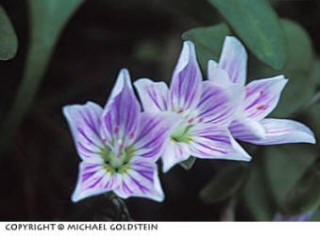
Spring Beauty
This clump of spring beauty was the first I’d seen, and it was so prolific that separating some flowers from it, to make an interesting composition, was not easy.
I spot-metered on the blossoms themselves, then opened up one f-stop to ensure they would not under-expose, using manual exposure. Depth-of-field was a problem, complicated by the slight breeze that was blowing, and I did a number of exposures, bracketing both my focus and my exposure, in the hope of getting one shot that was sharp.
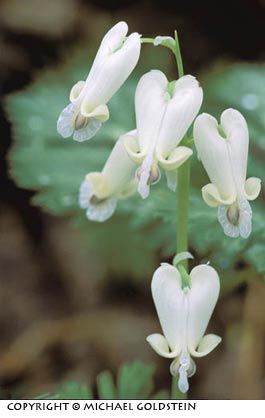
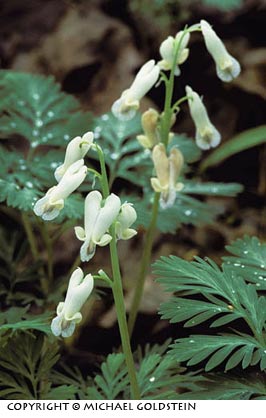
Squirrel Corn
On the trail to Laughing Whitefish Falls, I found this clump of strange looking wildflowers, which Marlene Planck identified for me as “squirrel corn”, the first I’d ever seen. I was then lost to the group for an hour, as I happily “worked” the area, making both close-ups, and “environment” shots.
Remembering that auto-exposure will try to present white flowers as a mid-tone, I used Rod Planck’s guidelines for exposure …
“What tone am I metering?” – Detailed white.
“What tone will my camera meter try to record it as?” – Middle tone.
The lighting was constant. I spot-metered on the bright blossoms, then opened up 1.5 f-stops to expose the flowers as a detailed white, using that as the basis for my manual exposure. As I backed away to create environment images, the exposure stayed the same.
By Michael Goldstein

Leave a Reply